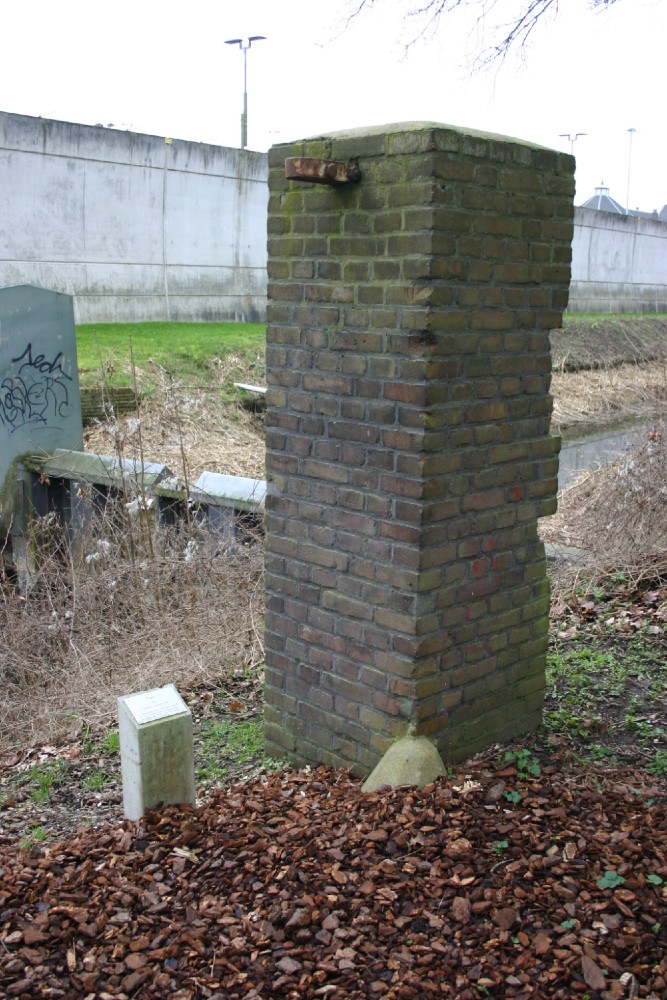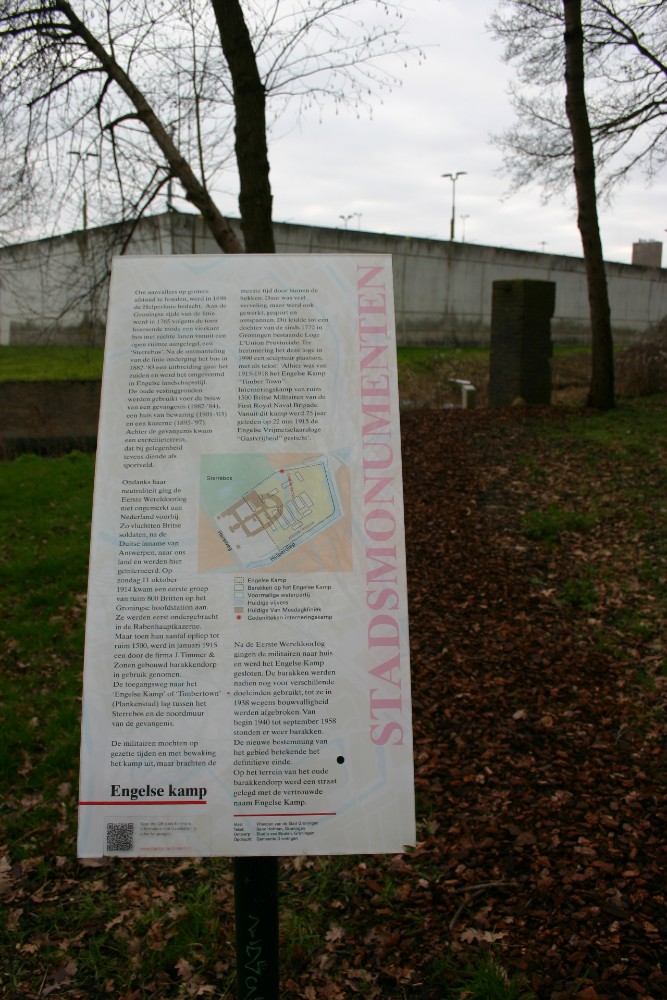The English Camp
On 11 October 1914, 1,500 men from the First Royal Naval Brigade arrived in Groningen. They were deployed at the beginning of October to assist the Belgian army when the German army attacked Antwerp.
Their escape route was cut off during the return trip. Commodore Wilfred Henderson did not want to be taken prisoner of war with his men and decided to cross the Dutch border with his three battalions.
When they arrived in the Netherlands, they were interned in Groningen in accordance with international law. Behind the current Van Mesdag clinic (the former city prison) a complete barracks camp was set up on the exercise grounds of the Rabenhaupt barracks (which was located opposite this prison) with many facilities for sports, housing, care, surveillance and relaxation. This camp was soon called the 'English Camp' in Groningen.
Immediately after the end of the First World War, the English Camp served until January 1919 as a relief camp for repatriated sick English prisoners of war and prisoners of war of other nationalities.
During the Second World War, the Rabenhaupt barracks was the home of the German occupation troops. In 1941 the 'Otto Weddingenlager' was established at the English Camp where a section of the Kriegsmarine was housed. The Rabenhaupt barracks were set on fire during the liberation in 1945; the English Camp was damaged. Nevertheless, they managed to restore the barracks in such a way that the military service could function here again. Thousands of Groningen, Frisian and Drenthe young men have been judged at the English Camp over the years.
The very last residents of the English Camp were the Spahis, the 7th squadron-ridden French soldiers of Algerian descent, who add luster to the Groningen Relief of 1958 with their beautiful Berber horses, white coats and red turbans.
Do you have more information about this location? Inform us!
Source
- Text: Bert Deelman
- Photos: Bert Deelman
- De internering van Engelse militairen in Groningen tijdens WO-1
Nearby
Point of interest
- Bullet Impacts Rabenhauptstraat 39 - Groningen
- German Slogan On Wall - Groningen
- Office NSB Representative for state affairs - Groningen
Monument
- Memorial First Royal Naval Brigade - Groningen
- Memorial Agricultural School - Groningen
- Jewish Memorial Groningen - Groningen
Cemetery
- Dutch War Graves RC Churchyard - Groningen
- Dutch War Graves Zuiderbegraafplaats - Groningen
- Commonwealth War Graves Groningen - Groningen
Remembrance Stone
- Stumbling Stones Anna Paulownastraat 26 - Groningen
- Stumbling Stones Anna Paulownastraat 9a - Groningen
- Stumbling Stone Anna Pauwlonastraat 7 - Groningen
Fortification
- German Bunker Haren - Haren
- German Tobruk Bunker Suikerunie Factory - Groningen
- German Shelter Suikerunie Factory - Groningen





